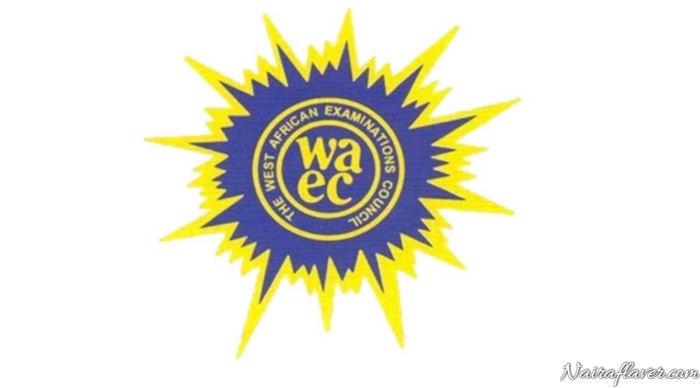2022 WAEC Financial Accounting Questions and Answers Expo
2022 WAEC Financial Accounting questions is very essential because so many candidates has been in search of it, we have been receiving messages from several WAEC aspirants all over West Africa regarding the 2022 WAEC Financial Accounting questions and answer.
Nairaflaver having been providing solutions to candidates who are eager to learn and make a good grade in oncoming/going waec exam. We provide you with the samples of 2022 WAEC Financial Accounting questions, kindly read through to see what you will be asked.
Financial Accounting paper is divided into two question types, Papers 1 and 2, both of which must be taken.
Paper 1 Objective
paper 2 Theory
2022 Waec Financial Accounting Question and Answers Expo
1. The officer responsible for ascertaining whether all public expenditure and appropriation are in time with the approved guideline is the
A. Creditor
B. Cashier
C. Auditor General
D. Bursar
ANSWER: C (Auditor General)
2. The cash basis of accounting requires the recognition of revenue only when they are
A. sent Out
B. documented
C. lost
D received
ANSWER: D (Received)
3. Responsibility accounting is particularly concerned with
A. variable cost
B. fixed cost
C. controllable costs
D. uncontrollable costs
ANSWER: C (Controllable costs)
4. Earnings per share is a measure of
A. loss
B. profit
C. income
D. expenditure
ANSWER: B (Profitability)
Related Article to See: Secret Reasons On How to Pass Waec that you See as Uncommon
Accounting Theory Answer
1. The Industry norm – This is the most common type of comparison. Analysts will typically look for companies within the same industry and develop an industry average, which they will compare to the company they are evaluating.
Ratios per industry are also provided by Bloomberg and the S&P. These are good sources of general industry information. Unfortunately, there are several companies included in an index that can distort certain ratios.
If we look at the food and beverage ratio index, it will include companies that make prepared foods and some that are distributors.
The ratios in this case would be distorted because one is a capital-intensive business and the other is not. As a result, it is better to use a cross-sectional analysis, i.e. individually select the companies that best fit the company being analyzed.
2. Aggregate economy – It is sometimes important to analyze a company’s ratio over a full economic cycle. This will help the analyst understand and estimate a company’s performance in changing economic conditions, such as a recession.
3. The company’s past performance – This is a very common analysis. It is similar to a time-series analysis, which looks mostly for trends in ratios.
1cii) Limitations to Accounting ratios/Financial ratios
There are some important limitations of financial ratios that analysts should be conscious of:
i)Many large firms operate different divisions in different industries. For these companies, it is difficult to find a meaningful set of industry-average ratios.
ii)Inflation may have badly distorted a company’s balance sheet. In this case, profits will also be affected. Thus a ratio analysis of one company over time or a comparative analysis of companies of different ages must be interpreted with judgment
2a. Working capital is the amount of a company’s current assets minus the amount of its current liabilities.
2b. Capital employed, also known as funds employed, is the total amount of capital used for the acquisition of profits. It is the value of all the assets employed in a business and can be calculated by adding fixed assets to working capital or subtracting current liabilities from total assets.
2c. A fixed asset is an item with a useful life greater than one reporting period, and which exceeds an entity’s minimum capitalization limit .
2d. A current asset is cash and any other company asset that will be turning to cash within one year from the date shown in the heading of the company’s balance sheet. (If a company has an operating cycle that is longer than one year, an asset that will turn to cash within the length of its operating cycle is considered to be a current asset.)
2e. The rate of stock turnover is a measure of the number of times inventory is sold or used in a time period such as a year.
The equation for inventory turnover equals the cost of goods sold or net sales divided by the average inventory.
3a. The accrual concept in accounting means that expenses and revenues are recorded in the period they occur, whether or not cash is involved.
3b. The business entity concept states that the transactions associated with a business must be separately recorded from those of its owners or other businesses.
Doing so requires the use of separate accounting records for the organization that completely exclude the assets and liabilities of any other entity or the owner.
3c. Dual Aspect Concept, also known as Duality Principle, is a fundamental convention of accounting that necessitates the recognition of all aspects of an accounting transaction.
3d. PERIODICITY CONCEPT is the concept that each accounting period has an economic activity associated with it, and that the activity can be measured, accounted for, and reported upon.
3e. The going concern principle is the assumption that an entity will remain in business for the foreseeable future. Conversely, this means the entity will not be forced to halt operations and liquidate its assets in the near term at what may be very low fire-sale prices.
4a)
A company is a legal entity made up of an association of persons, be they natural, legal, or a mixture of both, for carrying on a commercial or industrial enterprise.
4bi) An ordinary share represents equity ownership in a company proportionally with all other ordinary shareholders, according to their percentage ownership in the company. All other shares of a company’s stock are, by
definition , preferred shares
4b(ii)Preference shares, more commonly referred to as preferred stock, are shares of a company’s stock with dividends that are paid out to shareholders before common stock dividends are issued. If the company enters bankruptcy, the shareholders with preferred stock are entitled to be paid from company assets first.
4b(iii) A debenture is a type of debt instrument that is not secured by physical assets or collateral.
Debentures are backed only by the general creditworthiness and reputation of the issuer. Both corporations and governments frequently issue this type of bond to secure capital.
4b(iv) The authorised capital of a company (sometimes referred to as the authorised share capital, registered capital or nominal capital, particularly in the United States) is the maximum amount of share capital that the company is authorised by its constitutional documents to issue (allocate) to shareholders.
5a) journal
(i)suspense purchase Dr GHC(19,000) , Cr GHC(19,000)
(ii)returns inwards suspenses Dr(8000), Cr(8000)
(iii)suspense cashbook Dr(19,600), Cr(19,000)
(iv)suspense cash ook Dr(98,000), Cr(98,000)
(v) repairs of plant and machinery Dr(11,000) , Cr(11,000)
(vi) customer sales Dr(158,980), Cr(158,950)
(vii) supplier suspense(25,500 *2) Dr(51,000) cr(51,000)
(5b)
Suspense A/C:
Debit side:
purchases(19,000)
cash book(19600)
cash book(98000)
credit side;
returns inward(8,000)
supplier (51,000)
c/f (77,600)
136,600
No.5) use the image below
No.6) use the image belowNo7) use the image belowNo.8) use the image below
(9)
king star enterprises
departmental, trading, profit & loss acct
Debit side:
A le, B le
opening stock: 1000, 800
add purchases: 147200, 132800
148200, 123,600
add carriage: 1000, 1000
149200, 124600
less closing stock: 1200, 600
148000,124000
gross profit: 12000,16000
160000, 140000
office exp: 480, 120
rates: 176, 94
insurance: 692, 173
light: 384, 96
repairs: 240, 60
net profit: 10028, 159507
12000, 160000
credit side
A le, B le
sales: 160000,140000
160000, 140000
gross profit: 12000, 16000
12000, 160000
Important Notice on 2022 WAEC Financial Accounting questions
The above questions are not exactly 2022 WAEC Financial Accounting questions and answers but likely WAEC Financial Accounting repeated questions and answers.
These questions are strictly for practice. The 2022 WAEC Financial Accounting questions and answers will be posted on this page during the examination. Keep checking and reloading this page for the answers or better still subscribe to us.







